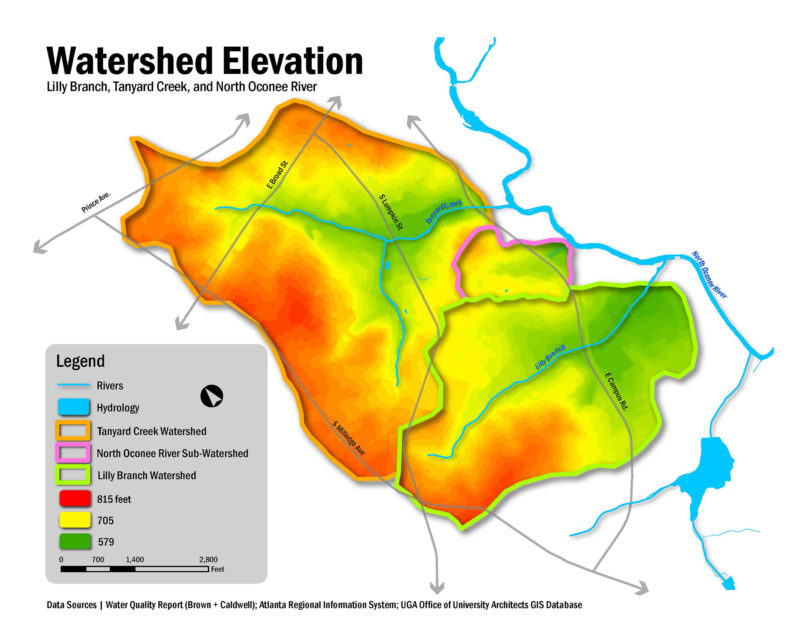Athens, Ga. – Most of the streams that run through the University of Georgia campus flow through culverts underground, making them out of sight and out of mind. A recent survey of students and community members found that more than 20 percent of those asked weren’t aware that there are any streams on campus.
A new project led by Watershed UGA aims to change that.
Watershed UGA, the interdisciplinary initiative to create a culture of sustainability focused on campus waterways, has launched a Georgia Funder campaign (http://t.uga.edu/29Q) for a pilot project to visually “daylight” a campus stream using graphics to represent its underground course, site-specific art installations and educational signage.
Lilly Branch, the focus of the pilot project, is 2.5 miles long and feeds into the North Oconee River. It rises just south of Five Points and for much of its length flows beneath UGA in a pipe before emerging at the Lamar Dodd School of Art. Like many urban waterways, Lilly Branch has a long history of impairment.
“Without connection to these streams, it is hard for students to develop a sense of stewardship of this valuable resource,” said Laurie Fowler, public service associate in UGA’s Odum School of Ecology and one of the project’s leaders. “However, if our streams are more present and visible, we can garner more support for their continued protection and restoration.”
The visual daylighting project will focus on a high-traffic area near Joe Frank Harris Commons where Lilly Branch flows directly under the sidewalk and physically daylights across the street.
The initial phase of the project will involve installing a rain garden to filter pollutants and store runoff from the rear Ramsey Center parking lot, student artwork inspired by the watershed, and a visual representation showing where the stream flows underground using paint or chalk on the sidewalk, all with accompanying educational signage.
Later phases call for more permanent representations of the stream’s course such as paving materials embedded in the sidewalk or a “stream” of native grasses running through areas of lawn.
“The pilot project will help us test education and design concepts to use in other high-traffic locations,” said Elizabeth Gardner, the Watershed UGA project coordinator. “These include the area along D.W. Brooks Drive in front of the Biomedical and Health Sciences Institute, and possibly in areas along Tanyard Creek near the Tate Student Center.”
The Watershed UGA team hopes to implement the first phase of the project during UGA’s Earth Week, April 18 to 22.
For more details about the project and to make a donation, please see the Georgia Funder page at http://t.uga.edu/29Q.
Watershed UGA is spearheaded by the Odum School of Ecology and the UGA Office of Sustainability, in partnership with the Office of the Vice President for Public Service and Outreach; Center for Teaching and Learning; Center for the Integration of Research, Teaching and Learning; Franklin College of Arts and Sciences; College of Agricultural and Environmental Sciences; College of Education; College of Engineering; College of Environment and Design; Warnell School of Forestry and Natural Resources; School of Law; College of Public Health; Graduate School; Facilities Management Division; Office of Service-Learning; Office of the University Architects for Facilities Planning; University Housing and Athens-Clarke County. More information is available at www.watershed.uga.edu.








